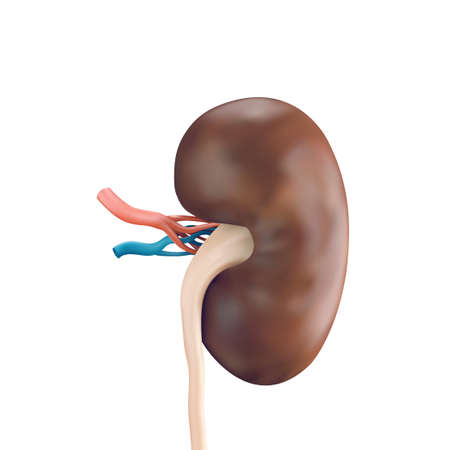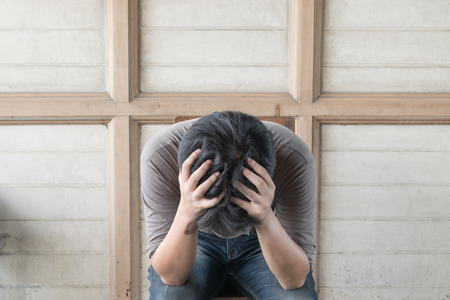1. What Is Depression?
Depression is more than just feeling sad or having a bad day. In the United States, it affects millions of people from all walks of life and can impact daily routines, relationships, and overall quality of life. Understanding what depression truly is helps break down common myths and makes it easier for individuals to seek help.
Defining Depression
Clinically, depression—often called Major Depressive Disorder (MDD)—is a mental health condition marked by persistent feelings of sadness, hopelessness, and a lack of interest in activities once enjoyed. It goes beyond the normal emotional responses to life’s challenges and can last for weeks, months, or even longer if not treated.
Common Myths vs. Facts
| Myth | Fact |
|---|---|
| Depression is just being sad. | Depression is a complex medical condition with emotional, physical, and behavioral symptoms. |
| You can “snap out of it” if you try hard enough. | Depression often requires professional treatment; willpower alone is usually not enough. |
| Only adults get depressed. | Depression can affect anyone, including children and teens. |
| If you have depression, you’re weak. | Depression is not a sign of weakness—it’s a medical issue that needs care like any other illness. |
The American Experience with Depression
In the U.S., conversations about mental health are becoming more open, but stigma still exists. Many people may hesitate to talk about depression or seek help because they worry about being judged. Recognizing that depression is a real and treatable condition is an important step toward improving mental health for everyone.
Clinical Definition in Everyday Life
The American Psychiatric Association defines depression as experiencing at least two weeks of low mood or loss of interest in most activities, along with other symptoms such as changes in sleep, appetite, energy level, concentration, daily behavior, or self-esteem. These symptoms make everyday tasks—like going to work or school—feel overwhelming or impossible.
2. Common Causes and Risk Factors
Depression is a complex condition that can affect anyone, regardless of age, background, or lifestyle. Understanding what causes depression can help us recognize the warning signs and know when to seek help. In this section, we’ll look at the most common causes and risk factors, especially those that are often seen in American society.
Biological Factors
Sometimes, depression has roots in our biology. This means things inside our bodies can play a big role in how we feel. Here are some common biological factors:
| Biological Factor | How It Contributes to Depression |
|---|---|
| Genetics (Family History) | If someone in your family has experienced depression, you may be more likely to experience it too. |
| Brain Chemistry | Chemical imbalances in the brain can affect mood and emotions, making it harder to feel happy or motivated. |
| Medical Conditions | Certain illnesses, such as chronic pain or hormonal changes, can increase the risk of depression. |
| Medications | Some prescription drugs have side effects that can lead to symptoms of depression. |
Psychological Factors
The way we think and handle stress also plays a big part in depression. Psychological factors include:
- Past Trauma: Experiences like abuse, neglect, or losing a loved one can have long-lasting emotional effects.
- Low Self-Esteem: People who struggle with self-worth are more likely to develop depression.
- Chronic Stress: Constant worry about work, school, or relationships can wear down mental health over time.
- Pessimistic Thinking Patterns: Focusing on negative outcomes and feeling hopeless can contribute to depressive feelings.
Social Factors and Pressures in American Society
The world around us also impacts our mental health. In the United States, certain social pressures and cultural expectations can make people more vulnerable to depression. Some examples include:
| Social Factor | Description/Example |
|---|---|
| Workplace Stress | The “always on” culture and pressure to succeed at work can lead to burnout and feelings of inadequacy. |
| Social Isolation | Lack of close friends or support networks is common, especially among older adults or those who have moved frequently. |
| Financial Strain | Worrying about bills, debt, or job security is a frequent source of anxiety for many Americans. |
| Cultural Expectations | The “American Dream” encourages perfectionism and self-reliance, which can make it hard for people to ask for help. |
| Discrimination and Stigma | Experiencing prejudice due to race, gender, sexuality, or mental health struggles increases vulnerability to depression. |
Who Is Most at Risk?
No single cause explains every case of depression. However, people with several risk factors—such as a family history of depression plus ongoing stress at work—are more likely to develop symptoms. Recognizing these risks is an important step toward getting support and finding effective treatment options.

3. Recognizing the Symptoms
Depression can show up in many different ways, and it’s not always easy to spot—especially when life gets busy or stressful. In America, where people often juggle work, family, and social activities, recognizing the symptoms early can make a big difference in getting the right help. Let’s look at how depression might appear in daily life by breaking down its symptoms into physical, emotional, and behavioral categories.
Physical Symptoms
Depression doesn’t just affect your mind; it can also take a toll on your body. You might notice changes that you can’t explain, even after seeing a doctor. Some common physical symptoms seen in American settings include:
| Symptom | Example in Daily Life |
|---|---|
| Fatigue | Feeling exhausted at work despite sleeping enough hours |
| Changes in appetite | Losing interest in favorite foods or stress-eating during late-night TV binges |
| Sleep problems | Trouble falling asleep after scrolling through social media or waking up too early before your morning commute |
| Aches and pains | Unexplained headaches or back pain that don’t go away with usual remedies |
Emotional Symptoms
The emotional signs of depression can be overwhelming and sometimes hard to talk about. Here are some examples that may be familiar to Americans dealing with everyday pressures:
- Persistent sadness: Feeling down most days—even during family gatherings or while out with friends.
- Irritability: Getting easily frustrated by small things, like traffic jams or long lines at the grocery store.
- Lack of motivation: Struggling to get out of bed for work meetings or losing interest in hobbies like watching sports or going to concerts.
- Hopelessness: Feeling like nothing will get better, especially after facing setbacks at school or on the job.
Behavioral Symptoms
Depression can also change the way people act. These changes often become noticeable to those around you at home, at work, or in social situations:
| Symptom | Example in American Life |
|---|---|
| Social withdrawal | Cancelling plans with friends for Friday night dinners or skipping family events like Thanksgiving gatherings |
| Trouble concentrating | Difficulty focusing during Zoom meetings or forgetting details while helping kids with homework |
| Neglecting responsibilities | Missing deadlines at work or letting household chores pile up over the weekend |
| Loss of interest in activities | No longer enjoying tailgate parties, hiking trips, or community volunteering that used to be fun |
If You Notice These Signs…
If you recognize these symptoms in yourself or someone close to you, know that you’re not alone. Spotting these changes is the first step toward understanding what’s going on and finding support through rehabilitation and other resources. Depression is common and treatable, especially when caught early.
4. The Role of Rehabilitation in Recovery
Rehabilitation plays an important part in supporting people with depression, helping them regain their well-being and independence. In the United States, both physical and psychological rehabilitation approaches are used to address different aspects of depression. Here’s a closer look at how these methods work together to support recovery.
Physical Rehabilitation: Moving Toward Wellness
Physical rehabilitation isn’t just for injuries or surgeries—it can also help people living with depression. Exercise has been shown to boost mood, reduce stress, and improve energy levels. Physical therapists may design exercise routines that fit each person’s abilities, making movement safe and encouraging small steps toward feeling better. Activities like walking, yoga, or light strength training are common choices. These activities don’t just help the body; they also increase confidence and motivation.
Common Physical Rehabilitation Activities
| Activity | How It Helps |
|---|---|
| Walking | Improves mood, increases energy, and supports overall health |
| Yoga | Reduces stress, promotes relaxation, and enhances mind-body connection |
| Strength Training | Builds confidence and helps with daily activities |
| Aquatic Therapy | Gentle on joints, provides a calming environment for exercise |
Psychological Rehabilitation: Addressing Emotional Well-being
Mental health professionals use different therapy techniques to help people manage their depression. Common options in the U.S. include:
- Cognitive Behavioral Therapy (CBT): Helps individuals identify negative thinking patterns and replace them with healthier thoughts.
- Group Therapy: Offers a supportive environment where people can share experiences and learn from others facing similar challenges.
- Psychoeducation: Provides information about depression, helping individuals understand their symptoms and treatment options.
Community-Based Programs in the U.S.
Many American communities offer programs that combine physical and psychological support. These may include local support groups, community fitness classes tailored for mental health, or partnerships between clinics and gyms. Community resources often make it easier for people to stay engaged and build supportive relationships during recovery.
Examples of Community Programs
| Program Type | Description | Where to Find It |
|---|---|---|
| Mental Health Support Groups | Peer-led meetings for sharing experiences and coping strategies | NAMI (National Alliance on Mental Illness), local hospitals, community centers |
| Therapeutic Recreation Classes | Group fitness or art classes designed for emotional healing | Parks & Recreation Departments, YMCA/YWCA locations |
| Integrated Care Clinics | Facilities offering both mental health counseling and physical therapy under one roof | Larger healthcare systems or specialized rehabilitation centers |
Together, these rehabilitation approaches create a strong foundation for recovery by treating both the body and mind. With the right support—whether through therapy sessions, movement programs, or community activities—many people find new hope and strength in their journey with depression.
5. Steps to Seek Help and Support
Taking the first step to seek help for depression can feel overwhelming, but you are not alone. Many people across the United States face similar challenges, and there are a variety of resources and support systems available to guide you on your journey toward recovery. Here’s a simple guide on how to find help and support in your community.
Start by Talking to Someone You Trust
If you’re feeling down or struggling with symptoms of depression, it’s important to reach out. This could be a family member, close friend, or trusted colleague. Sharing your feelings can provide relief and help you take the next steps.
Reach Out to Healthcare Providers
Your primary care doctor is often a good starting point. They can discuss your symptoms, rule out other medical conditions, and refer you to mental health professionals like psychologists, counselors, or psychiatrists. If you don’t have a regular doctor, many clinics and community health centers offer mental health services.
Finding a Mental Health Provider
| Resource | Description |
|---|---|
| Psychology Today Directory | An online directory to find therapists in your area |
| National Alliance on Mental Illness (NAMI) | Provides resources, helplines, and local support groups |
| Mental Health America (MHA) | Offers screening tools and connects people with support services |
| Employee Assistance Program (EAP) | Many workplaces offer free counseling sessions for employees |
Connect With Support Networks
Support groups can be a powerful way to share experiences and learn coping strategies from others who understand what you’re going through. Many communities have in-person or virtual support groups for depression, anxiety, and related challenges.
Types of Support Groups Available
| Type | Description |
|---|---|
| Peer-led Groups | Facilitated by individuals who have experienced depression themselves |
| Professionally-led Groups | Run by licensed therapists or counselors for structured support |
| Online Communities | Forums and chat rooms that provide 24/7 connection and advice |
Access Local Community Resources
A variety of organizations throughout American communities offer help for those experiencing depression. Public libraries, churches, schools, and local non-profits often host wellness workshops or provide information about free or low-cost mental health services.
Crisis Resources You Should Know About
- 988 Suicide & Crisis Lifeline: Call or text 988 for immediate emotional support nationwide.
- Crisis Text Line: Text HOME to 741741 for free crisis counseling via text message.
- SAMHSA Helpline: 1-800-662-HELP (4357) offers confidential help finding treatment options.
You Are Not Alone—Take the Next Step Today
No matter where you are in your journey with depression, remember that help is available. Don’t hesitate to reach out—taking action today can make all the difference in your path toward healing and recovery.


